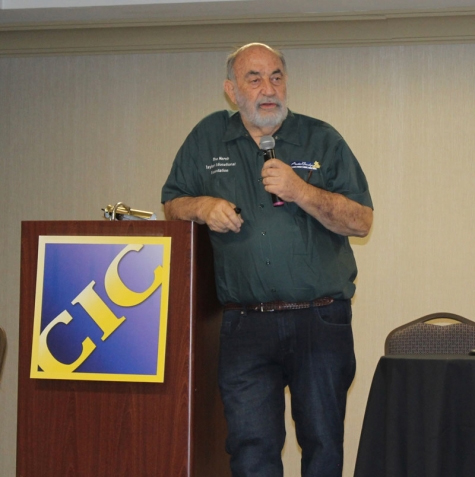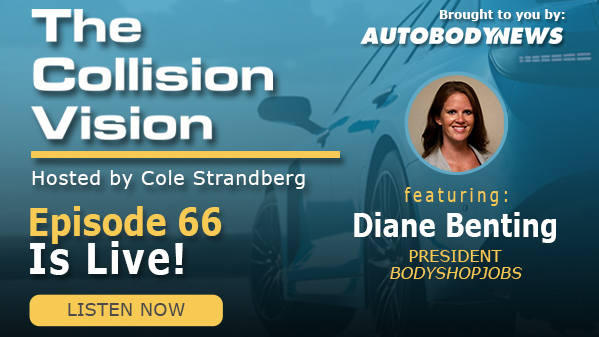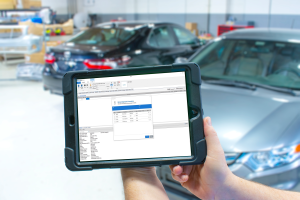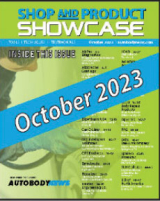Several weeks ago, a local body shop owner asked Toby Chess to help set up a welder to repair an aluminum deck lid on a Mercedes-Benz.
When Chess arrived at the facility, he quickly realized the technician didn’t have an understanding of the process to repair the vehicle.
As a result, Chess created a Standard Operating Procedure (SOP) for the shop, laying out the steps to get the job done. Since then, Chess has created more than 30 SOPs for the collision repair industry and has been sharing them with shops across the country.
“SOPs help walk you through each step of the repair process,” said Chess. “Body shops are going to need more of this in the future.”
I recently talked to Chess about his predictions for the industry as a result of COVID-19 and what shops will need to be successful in the future.
What changes have you seen at shops since COVID-19 and how do you think this will affect their businesses?
Although volume is down in many shops, the good news is that most shop owners I have talked to say their bottom line is better today than it was before. This is because they were forced to make adjustments in the current environment and look at incorporating “lean” practices at their companies.
Shops are rethinking how they operated previously and changing their business practices to become more efficient. Afterward, they often say they’ll never go back to doing things the way they did before.
The key is to set up a good foundation by creating SOPs throughout your shop, such as picture taking, blueprinting and parts handling. If you don’t have good processes to follow, it doesn’t do your business any good.
How can SOPs help shops repair vehicles more effectively and efficiently?
When I ask body shops what they do, they usually tell me, “We repair vehicles.” Think about the following:
Does a body shop not give a guarantee that the car will behave in the same way as before the repair? Do they not guarantee the car is back to its original length, width and height dimensions? Do they not guarantee the paint for the life of the repairs? Do they not guarantee that it will have the same corrosion protection as the OEM provides?
My contention is that’s not repairing a vehicle; it is remanufacturing one. There’s a difference. If you agree that it’s a remanufacturing process, you can look at what OEMs do during that process and put it to use at your shop.
OEMs have an SOP for everything; body shops should have them too.
When cars come to a facility, technicians ideally fix them the same way every time. Obviously, each dent on a car is going to be different, yet the process used should be the same.
If I were a shop owner, I would have an SOP for every process in the shop to ensure a quality and proper repair. Once those are in place, training becomes key.
What will collision repair training look like in the future?
It’s going to be a mixture of hands-on and in-person. Like many other training organizations, I-CAR has transitioned the majority of its classes online right now. Typically, shop owners haven’t learned techniques online and many of us aren’t big fans of learning this way, relying on hands-on instruction for most of our careers.
We need to recognize that many companies will be offering virtual training in the future and shops will need to adapt. However, when it’s available, I find that hands-on training is extremely beneficial.
With the tremendous need for good-quality training, new opportunities are being offered through organizations such as I-CAR, the Automotive Management Institute (AMi), VeriFacts Automotive and VECO Experts.
I also think more and more OEM training will be required in the future. Auto manufacturers are starting to take an active role in saying how they want their cars repaired.
Just look at the John Eagle case case. The insurance company didn’t pay the difference to have the vehicle repaired the proper way and the shop acquiesced and didn’t follow the OEM procedure. Who should the shop have been working for? It’s critical to remember that shops always work for the customer.
OEM certification programs continue to grow and are offered by most manufacturers, including Porsche, Audi, Mercedes-Benz and BMW, just to name a few. There is also the University of Toyota, which is called Toyoland.
Although certification programs are being offered across the country, I find many shops aren’t taking advantage of these opportunities.
If technicians don’t have proper training, they will not be able to repair vehicles based on the OEMs' specifications. Shops usually find that once they receive training on a procedure, it makes all the difference in the world.
How can shops learn more about the issues affecting the collision repair industry?
They have to read! There is so much information offered by industry publications and other information available on the internet but often, people don’t take the time to look at it. Not only do they need to read about the industry, they also need to become part of the industry.
I recommend that shop owners and managers get out and network. Industry events, such as the Collision Industry Conference (CIC), offer attendees the opportunity to interact with others and find someone who has a similar way of looking at things. It also allows you to learn new ideas.
Many of today’s successful operators have realized the importance of getting out of their environments to see what is going on across the country.
I highly encourage shops to join an industry association, such as the Society of Collision Repair Specialists (SCRS.) They offer so many helpful resources and are dedicated to supporting the industry. There is a lot of free information on their website and the membership fee is money well spent.
As a result of your involvement with the March Taylor Foundation and other initiatives to train technicians, what advice can you offer to find qualified workers?
In the past, a technician could just open the hood and figure out how to repair the car. That’s no longer the case.
As new technology is developed, shops will not only need the proper tools and sophisticated equipment, but they will also need to know how to use it properly to ensure the vehicle is brought back to the car manufacturer’s specifications.
One of the biggest challenges shops are starting to have and will continue to have in the future is finding someone who can address the electronics on a car as well as Advanced Driver Assistance Systems (ADAS.) The need for calibration is going to be paramount in the industry and many dealers don’t have the ability to do it.
I think mentoring is really important, but we don’t do it enough. Everyone talks about the need to find good talent and train people, but shop owners and managers need to step out of their comfort zone and take the initiative to make a change.










Stacey Phillips Ronak